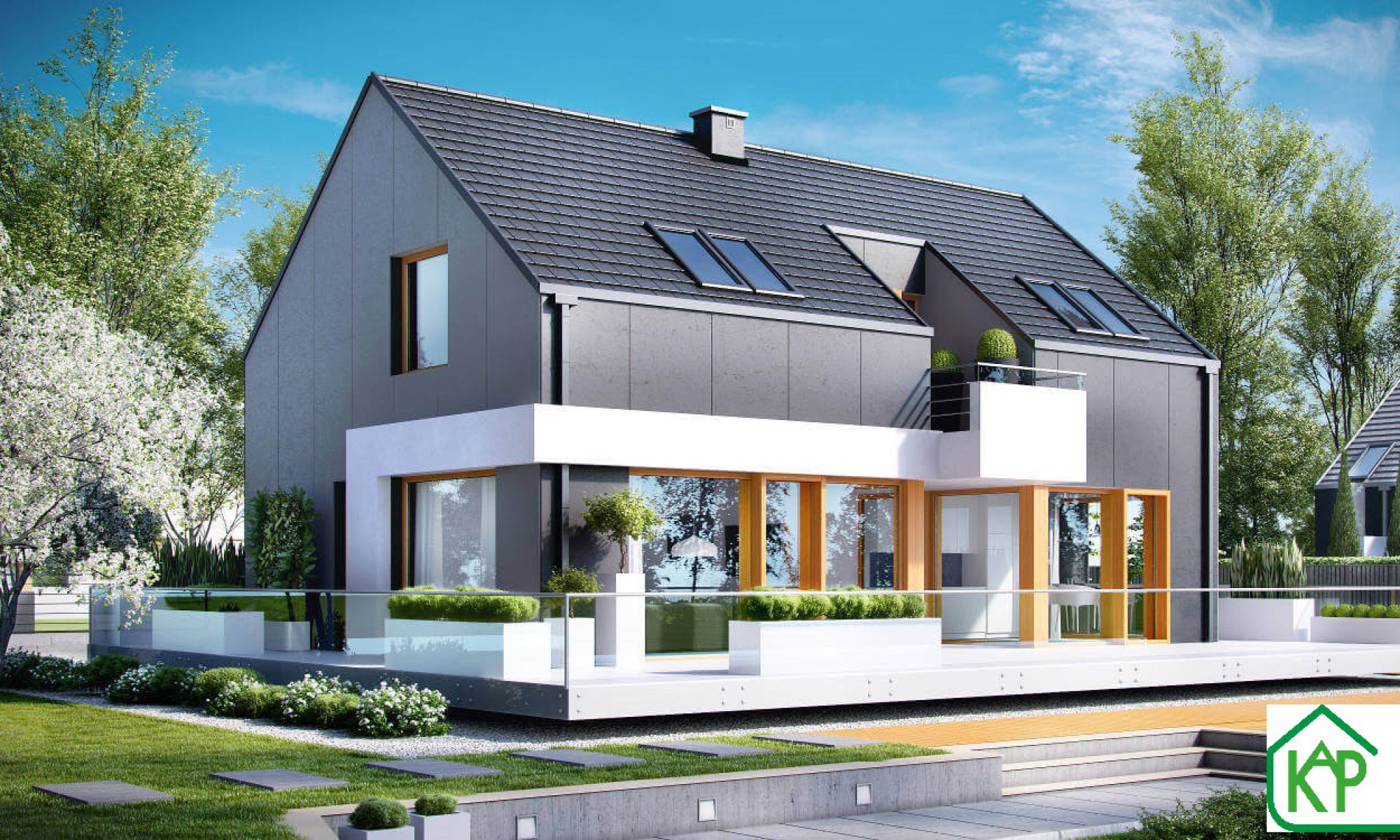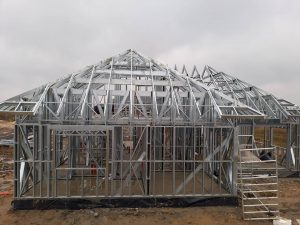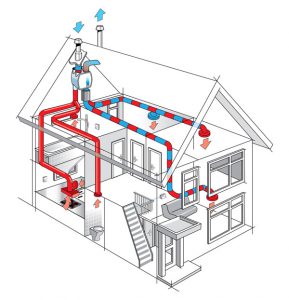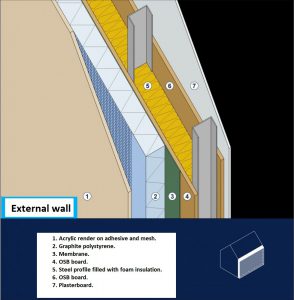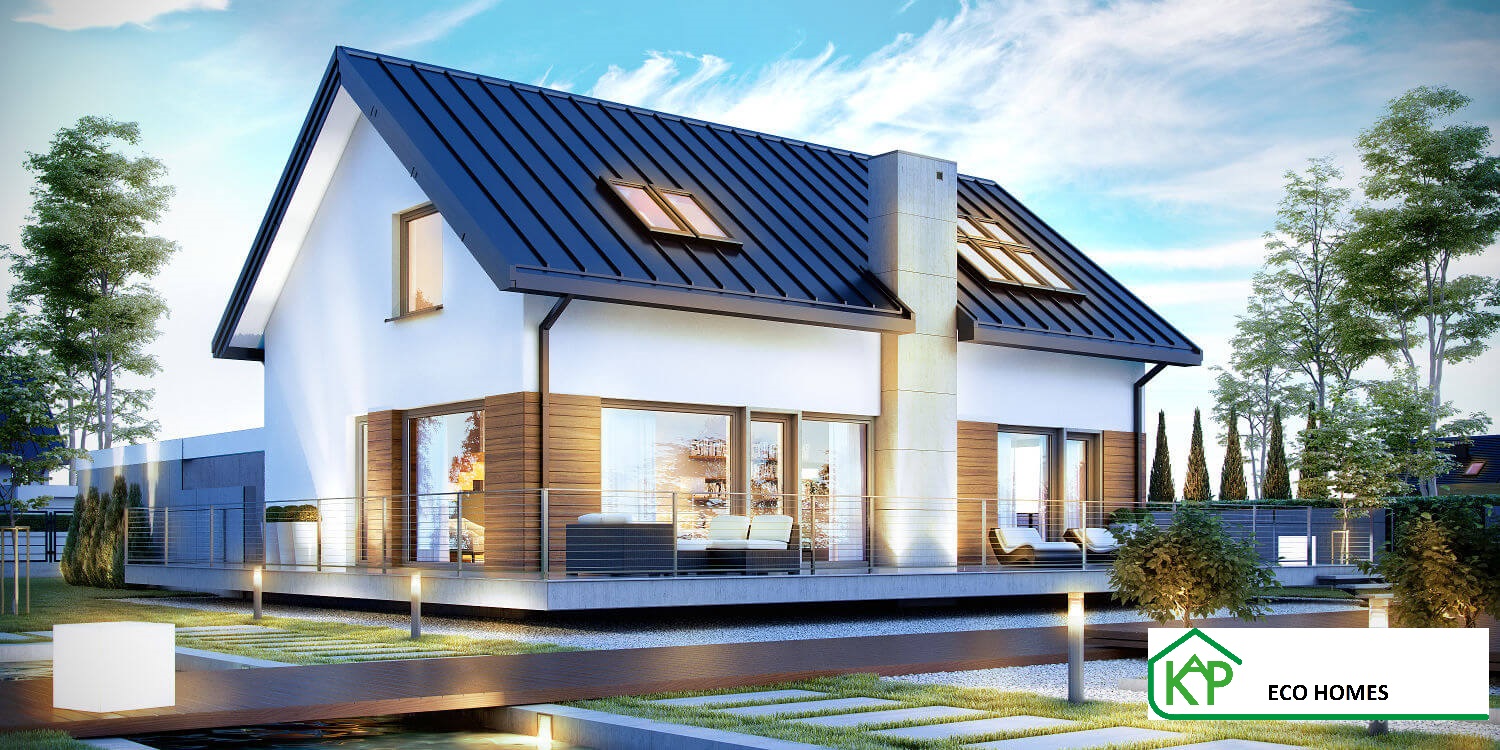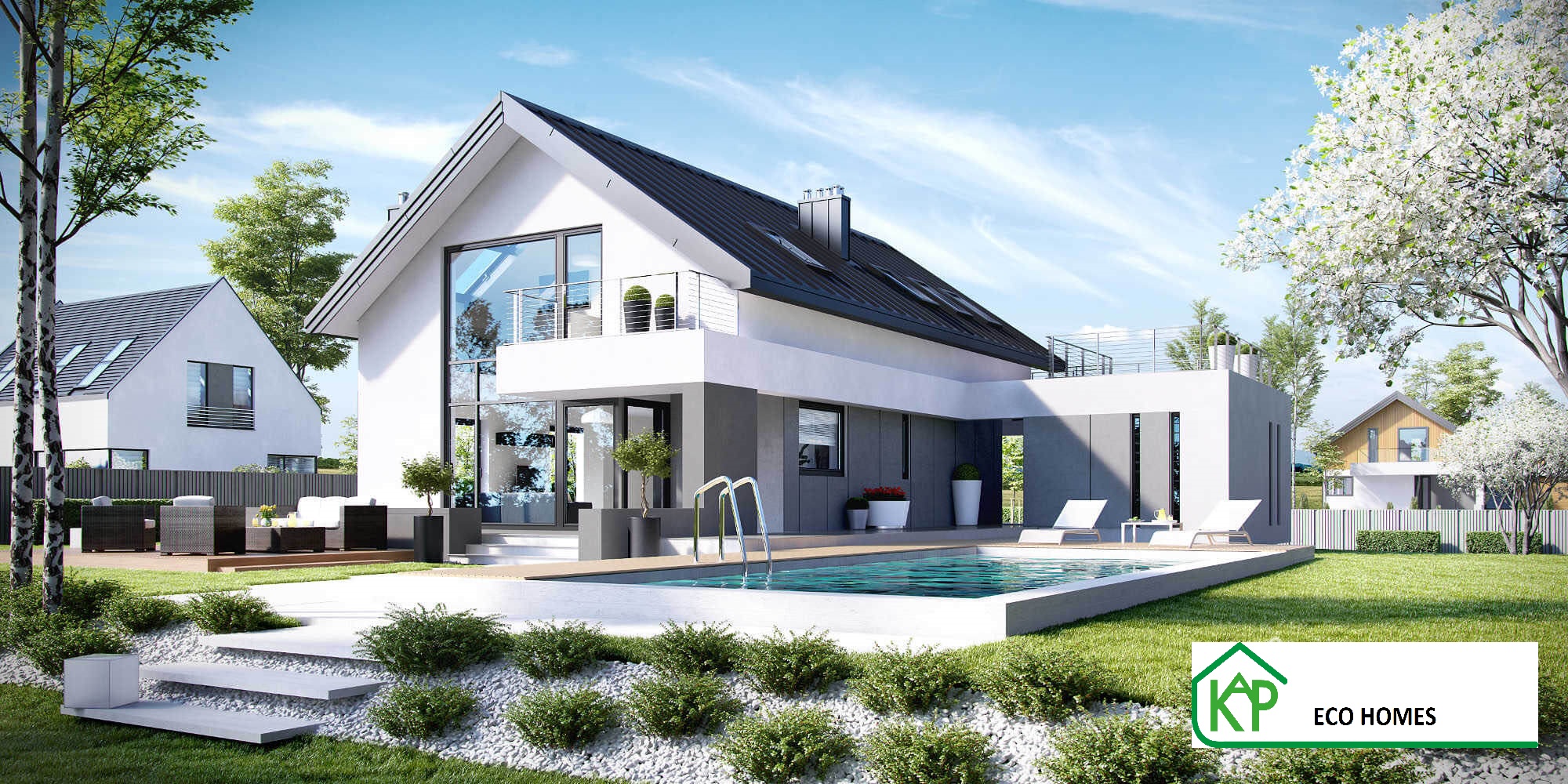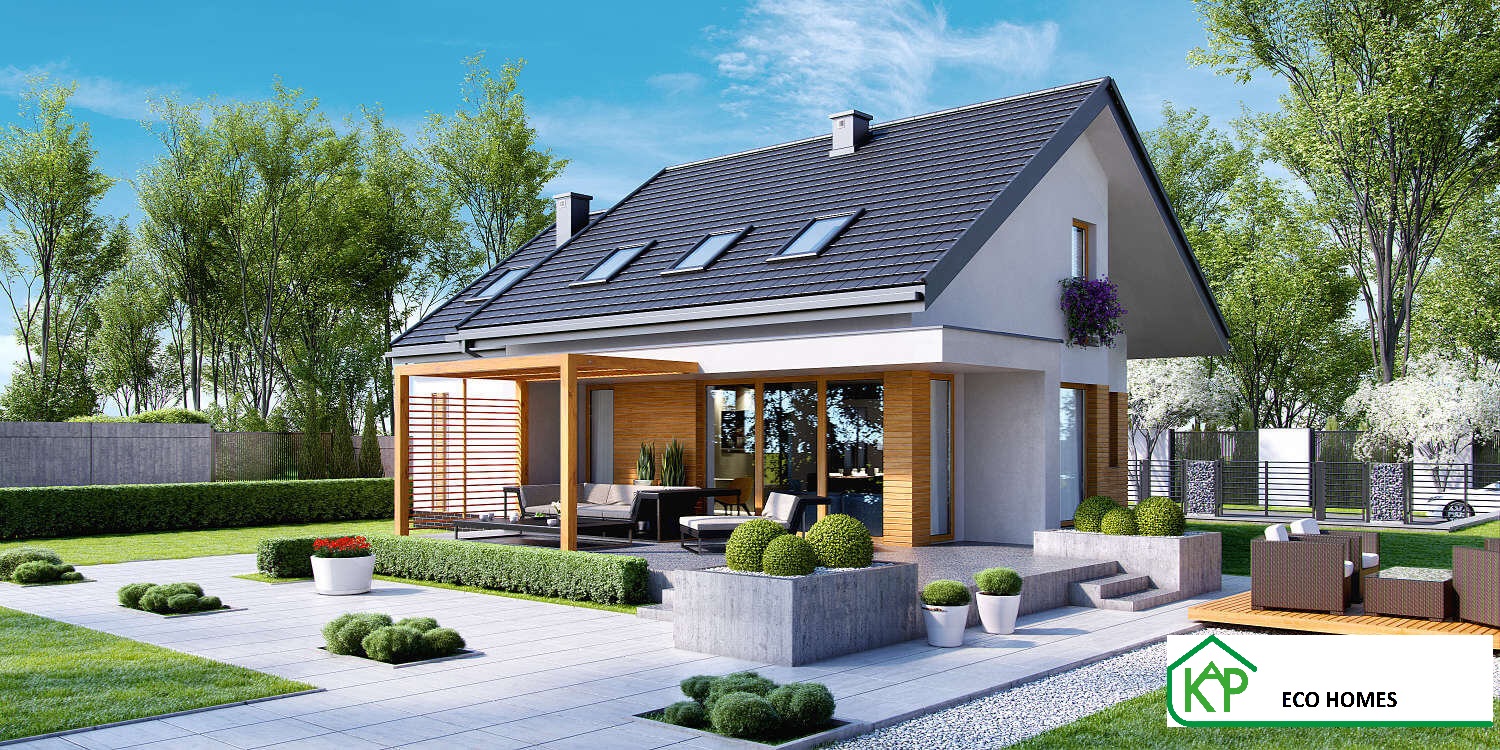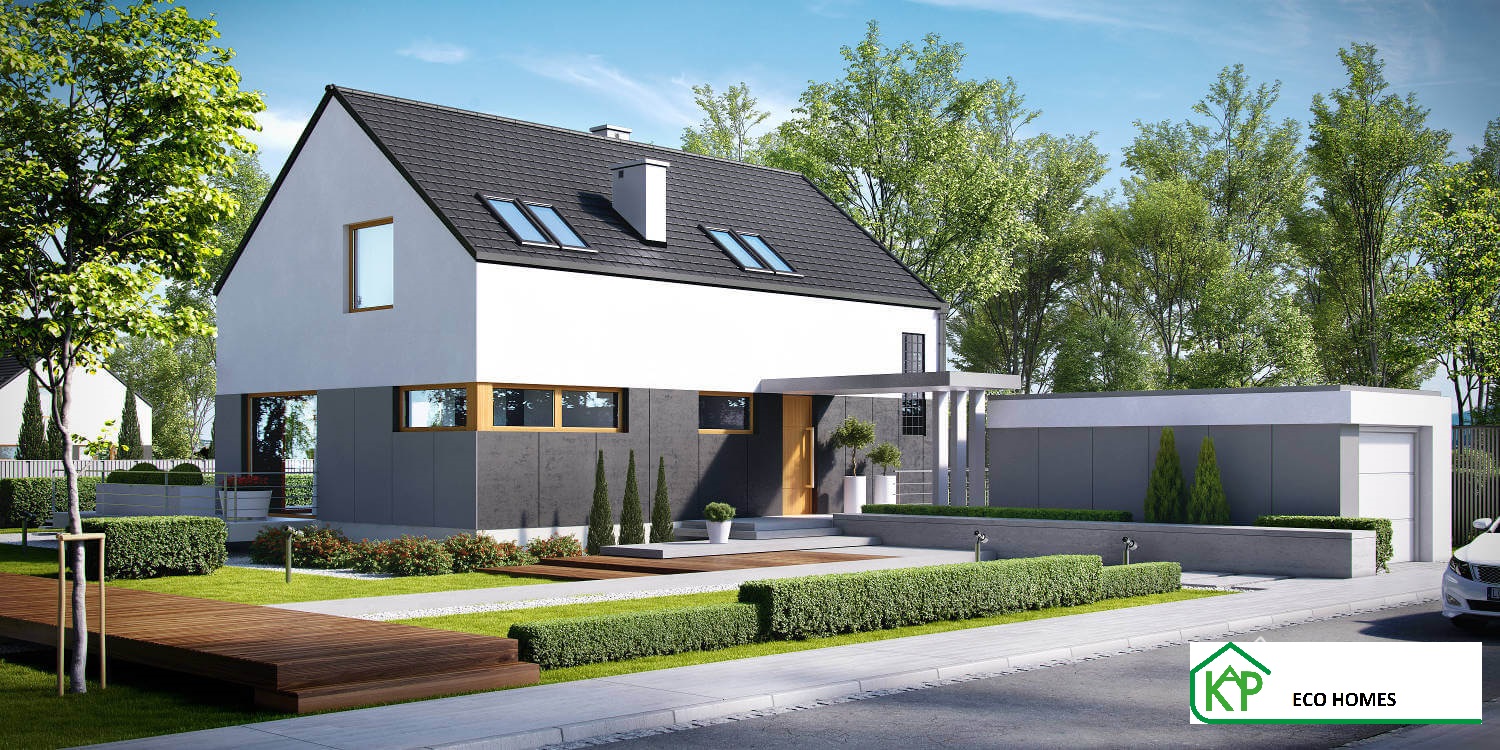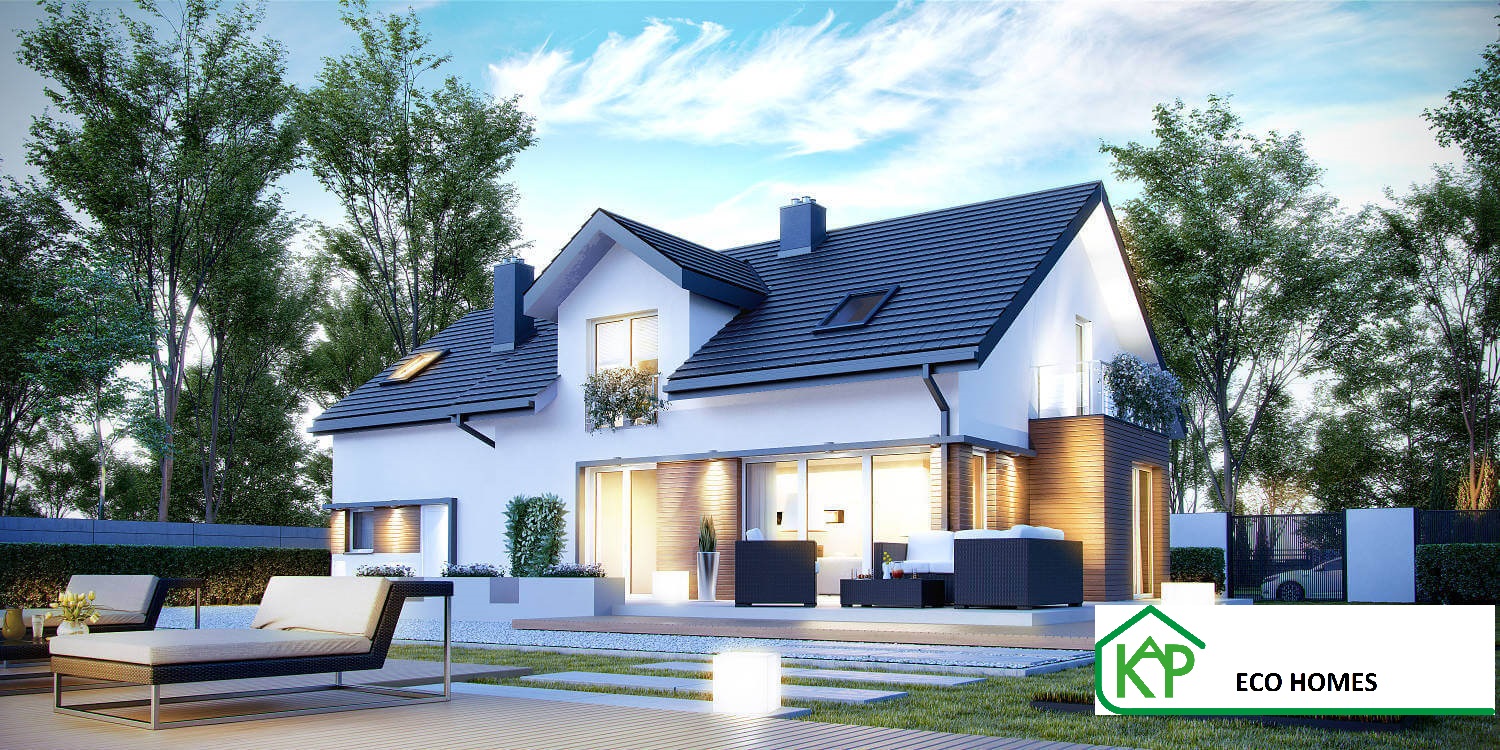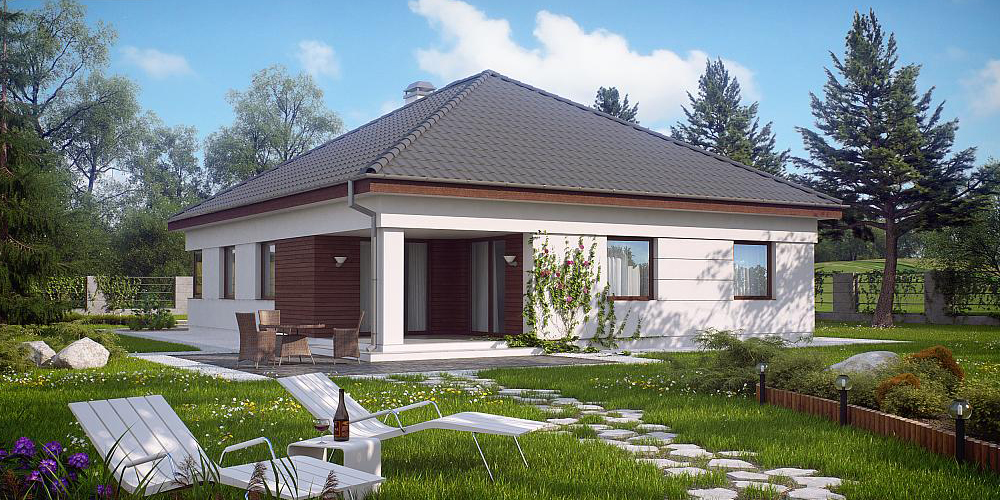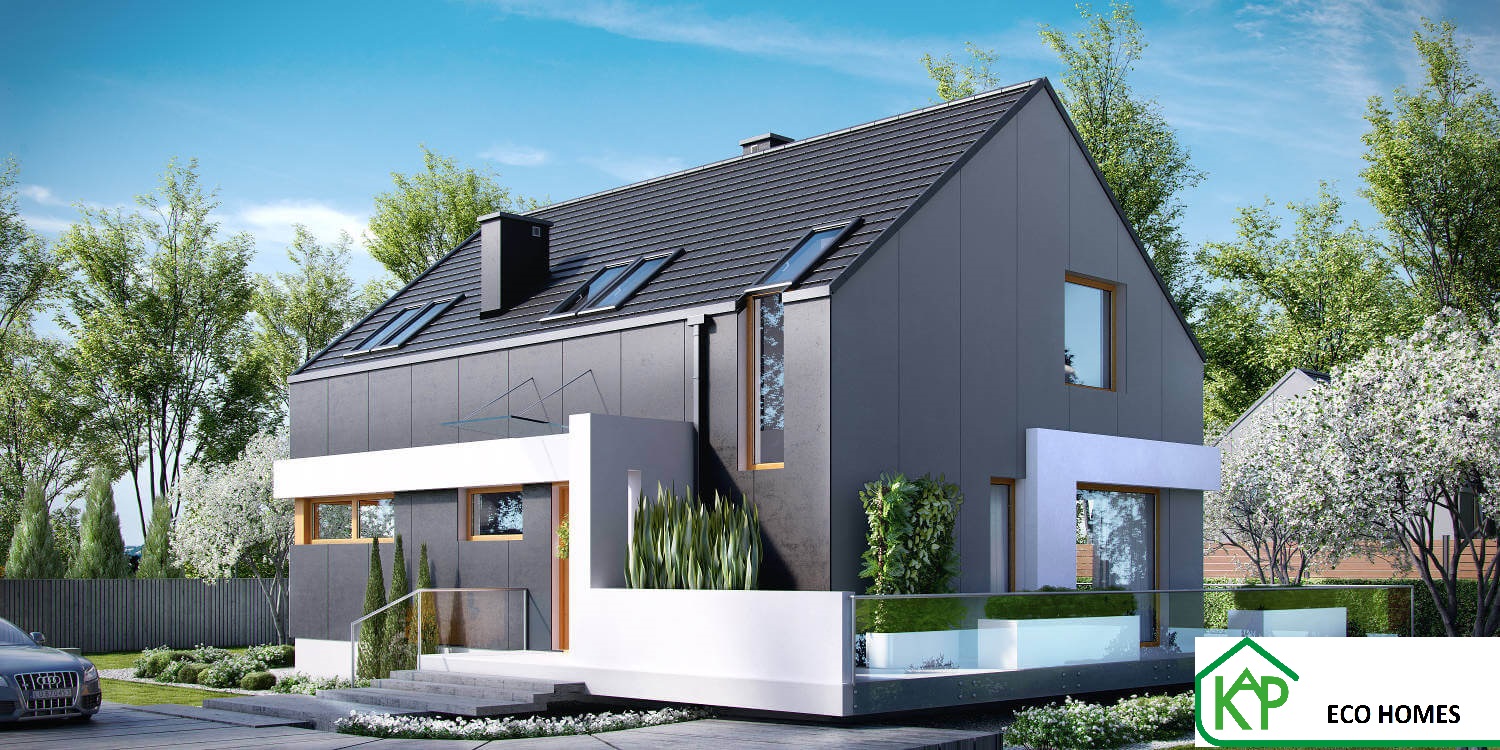Steel Frame Construction
KAP ECO HOMES is one of the biggest manufacturer of complete solutions for steel structure building system with using FrameCad machines. By using the latest computer technology and excellent manufacturing equipment, KAP ECO HOMES can produce efficiently and accurately galvanised cold-bend steel structures. KAP ECO HOMES strategic idea is to spread professional and practical solutions to improve the processes of design, production and installation of light steel structure buildings.
The level of advanced system, constantly conducted research on the development of products, certificates and implemented procedures of factory production control give KAP ECO HOMES a significant advantage over competitors from other European countries. KAP ECO HOMES has its own design office which develops construction buildings projects with the help of specialized software and integrated production line. It allows us to execute projects adjusted to the individual requirements of the investor or contractor.
KAP ECO HOMES light steel structures offer many unique advantages for investors and users: design speed and fabrication, high rate of site installation, durability and precision, corrosion resistance and biological agents, non-flammability, no need to hire qualified staff and heavy equipment, lower costs of transport and delivery.
The buildings produced on the basis of steel frame provided by KAP ECO HOMES are lighter, more resistant to vibration, they do not require seasoning and technological gaps, they are formed rapidly and have better energy parameters compared with traditional technologies. Construction work can be carried out by almost all year round. Wide range of applications of light steel structures begins with residential buildings, and finishes with commercial and industrial buildings.
Light steel structures supplied by KAP ECO HOMES are also extremely environmentally friendly. Moreover, their production requires less energy and what is more they are a hundred percent recyclable.
Low energy, low carbon and passive houses:
- Building regulations Part L : New houses must comply with the new regulations.
- An A-rated house is a low energy house (which has received an A rating using the BER methodology)
- A “passive” house is a house designed to have a heat demand which is as low as is practically achievable.
- A low carbon or zero carbon house is a house that is responsible for little or no carbon emissions.
What are the benefits of an energy efficient house?
Energy for heating accounts for around seventy five percent of the energy used in a “typical” dwelling. Simply by decreasing the amount of heating energy required and by making use of free solar and internal heat gains, it is possible to build a house that needs much less energy to run. Furthermore, as the energy demand of a house decreases, so do the carbon emissions, and renewable energy can then be generated on site (heat and electricity) to provide the tiny amount of energy required for heating and hot water, and feasibly achieve zero carbon emissions.
Note: the greater the amount of energy a house needs for heating, hot water, ventilation, lighting and appliances, the greater the carbon emissions the house is responsible for. Therefore, it is important when designing a low or zero carbon house, to first of all reduce the heat demand as far as is practically achievable, and then examine renewable and energy efficient heat options.
External Wall Insulation
The external walls of a house act like a barrier, retaining heat on the inside whilst protecting your property from the cold elements on the outside. External Wall Insulation is the perfect solution when looking to improve a properties heating energy performance and minimise heat leakage or ‘thermal bridges’. Thermal bridges are weaknesses within a building fabric or building material such as insulation that can allow heat from within the building to escape and cold from the outside to enter through these weak spot, this reduces the energy efficiency of the property, and cause thermal comfort problems.
External Wall Insulation will not only help you stay warm but it will also save energy and money. Available in a wide variety of colours and finished, External Wall Insulation can also transform the exterior of your property, making your home look completely refreshed or dramatically changing the exterior appearance of your house altogether the choice is up to you.
How does it work?
This type of insulation solution involves mechanically fixing a layer of Kingspan insulation to the exterior wall of the property. This layer is applied to the entire envelope of the building and will prevent heat loss and thermal bridging. A weave fibre mesh is then embedded onto the insulation before being covered with a durable finish to withstand the weather and making the exterior of the property waterproof. When that is complete a render is applied. You can then choose from a variety of different finishes, including textured, painted, pebble-dashed, panelled and smooth, in a variety of colours. This is a non-intrusive procedure and will help prevent damp and condensation on the properties internal walls.
Spray Foam Insulation in New Build Homes
New build homes are built to stringent energy saving standards, meaning they’re warmer, more cost-efficient and have a lesser impact on the environment than ever before.
If you’re building a new home, or redeveloping a property, you’ll know the government targets for reducing carbon footprint mean that you will have to adhere to the energy saving standards and regulations too. But, with a few clever investments, it’s easier to create a more eco-friendly home than you might think.
Spray Foam Insulation Spray foam insulation is applied by using expanding polyurethane foam and is most commonly used on the underside of roofs, but can also be applied to visible wall areas and ground floors for added insulation. The foam expands to create a high performance insulation barrier, but offers a variety of other benefits, including acoustic insulation and, because it is warm to the touch, will also eliminate any concerns about condensation. It adheres to any dry, clean surface material, and as it expands, it will seamlessly fill any gaps and effortlessly cover any hard to reach areas.
The installation process makes it the perfect solution for new build projects, as it can be applied during the construction phase quickly and easily, allowing you to continue your build and decoration to schedule.
A Warmer Home
The most recent regulations state that pitched roofs, insulated at rafter level, should have a minimum U Value of 0.2, and with a layer of spray foam (applied to a thickness of just 100mm), you’ll achieve exactly this. With an additional 50mm, you can enhance the insulation properties to a U Value of 0.16. This means that you’ll easily satisfy any Building Control requirement, without losing
too much space or height, whilst lowering your energy bills.
This is perfect if you plan to use your loft space as an additional living or storage area, as it will create a warm, dry and dust free space that is habitable and well protected from the elements.
Our spray foam is also HCFC and CFC free and has zero ozone depletion potential, so you can rest assured that you will not be damaging the environment with your new build home.
